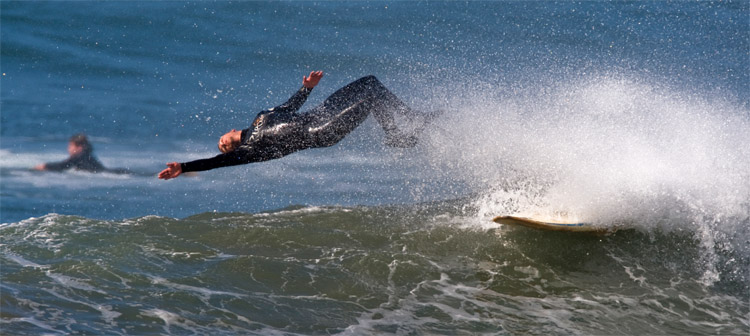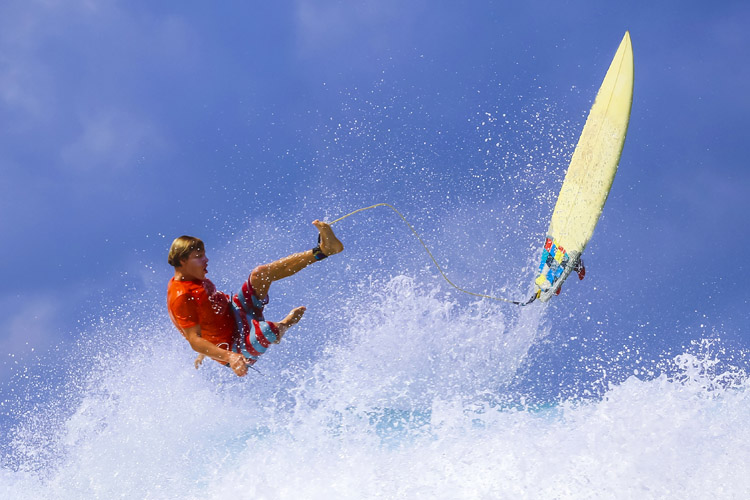Learn how to wipe out safely. Protect yourself and other fellow surfers from injuries and avoid equipment damage. Reduce the risks when falling off a surfboard.
All surfers fall and wipe out. It's part of the thrill. Sometimes, it's a technical mistake or gear failure; in other cases, Nature is just too strong and brings us down to the floor.
The most common consequences of falling off the surfboard are cracked surfboards, sprained ankles, ruptured eardrums, lacerations, muscle strains, broken noses and necks, and minor leg injuries.
In the worst-case scenario, you may drown.
But surfing is a safe sport. Surfers should be able to manage the risks involved in wave riding and prepare for extreme wipeouts. Fins and noses are sharp weapons and can quickly draw blood.
First, you need to know that dismounting a surfboard without hurting yourself and others requires calmness and control. Knowing how to fall is a skill.
Before paddling out, watch where the waves are breaking and plan your surf session. Search for channels where you can eventually paddle to in case of emergency.
Why Do Surfers Fall?
Surfers fall off the surfboard on the following occasions:
- Duck diving powerful waves;
- Taking off on a steep wave;
- Losing balance on a bottom turn;
- Losing balance on a cutback;
- Failing to land an air or a floater;
- When the barrel closes out;
- When a wave closes out;
- Riding a wave in collision mode with another surfer;

How to Fall Safely
Here's what you should always do if you're forced to push the eject button:
- Fall off to the side or back of the board;
- Cover your head with your arms;
- Use your feet to push the surfboard away from you;
- Hold your breath and get ready to remain underwater for a few seconds;
- While underwater, use your hands to protect the head from the impact of the surfboard;
- When you emerge after a wipeout, and if you're suddenly caught inside, maintain your surfboard behind your back as you duck dive the incoming waves;
- If the wave closes out, jump into the whitewater foam that is breaking over your shoulder;
- If you're going in and the wave closes out, return to the prone paddling position and ride the whitewater all the way to the beach lying on your surfboard;

Here's what you shouldn't do in case of a wipeout or unexpected discard of the surfboard:
- Never jump in front of the surfboard;
- Never project the board with your feet when kicking out: the surfboard may hit other surfers or ricochet towards yourself;
- Never fall headfirst into the water: use your butt to cushion the impact, or bend your knees and go feet first;
If you successfully ride a wave until it loses all energy, make sure you step off into the water and then grab the board or pull the leash.
If you can, wear a helmet. It can save a surfer's life.
